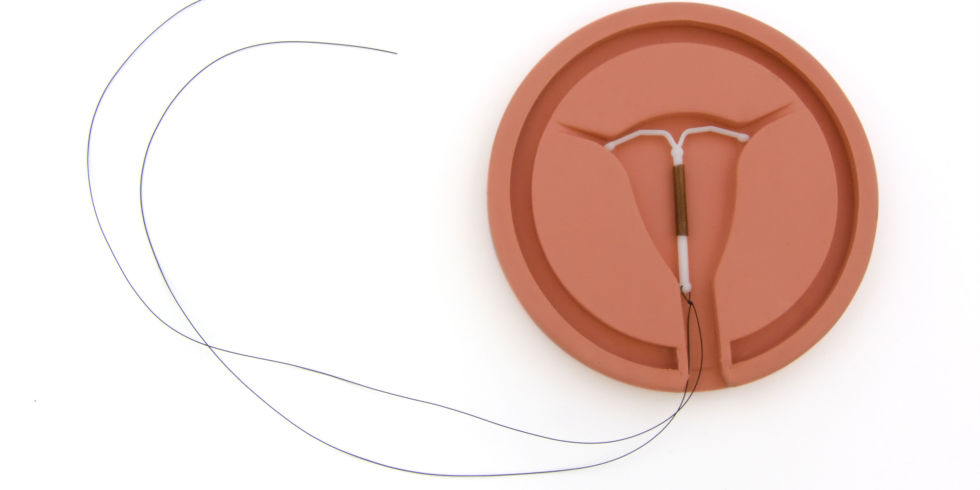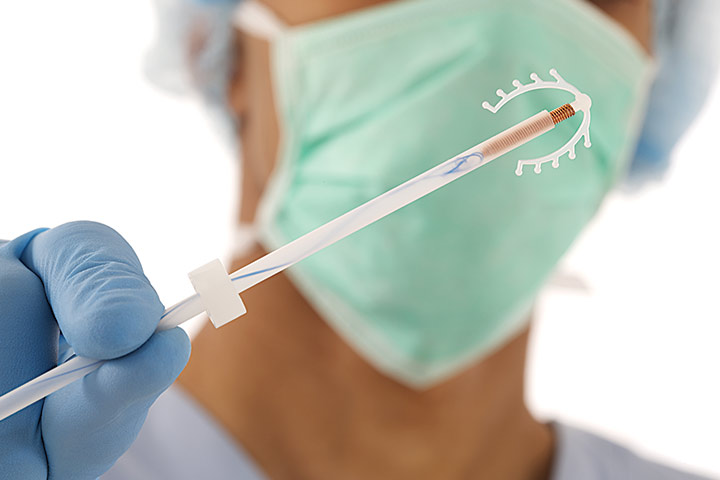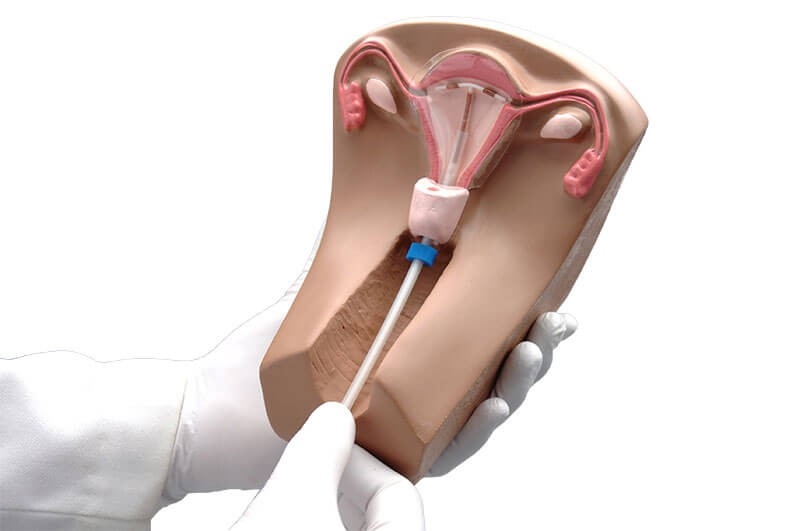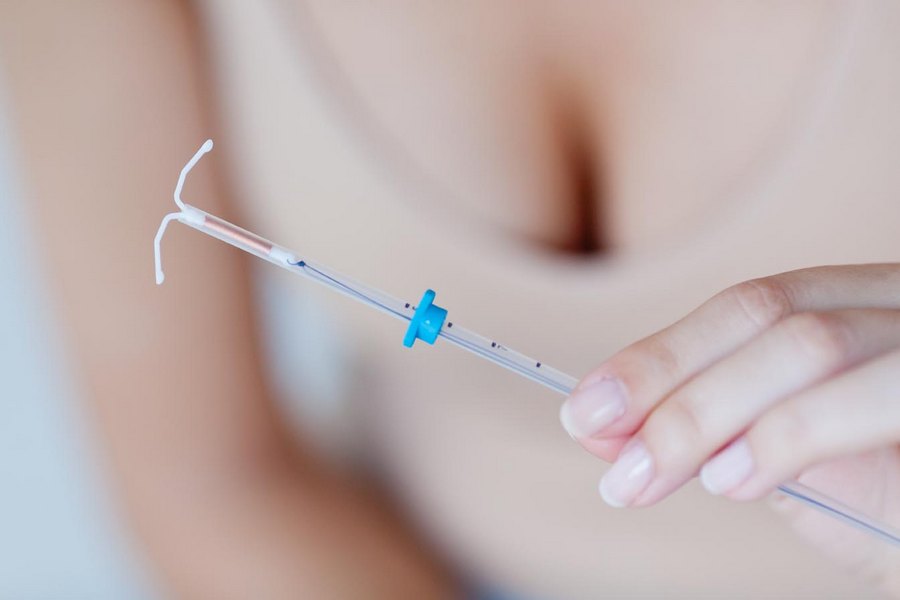Contraception is an effective way to prevent unwanted pregnancy, which every modern inhabitant of our planet should be familiar with. If men and women were more enlightened, paid more attention to this issue, in our world there would have been much less unhappy families, single mothers and, of course, abandoned children. As part of this material, I would like to highlight the topics of using intrauterine contraceptives. The topic is most relevant for the fair sex. We will thoroughly study intrauterine contraceptives: types, advantages, disadvantages, features of use.
What is it?
So, an intrauterine contraceptive, better known among women as a spiral, is a fairly effective way to protect against unwanted pregnancy in the form of small funds 18-35 mm round, spiral, T-shaped. They are introduced into the uterine cavity, for which they got their name.

Mechanism of action
Intrauterine contraceptives are a foreign substance for the uterus, stimulating the release and accumulation of cells in its cavity that are harmful to sperm and ova. In addition, they start the process of accumulation of substances that reduce the ability of the uterus to contract, which, in turn, prevents the attachment of a fertilized egg to the walls of the cavity. It must be admitted that the so-called spirals are very popular, as they have a long term of use at high efficiency. Numerous studies in this area have shown that continued use of intrauterine contraceptives also activates undulating unidirectional contractions of the fallopian tubes. Thus, even a fertilized egg will enter the cavity somewhat earlier, being incapable of further implantation.
Benefits
For the objectivity of the review, I would like to mention the advantages of intrauterine contraceptives that not only gynecologists, but also modern women managed to identify:
- High efficiency - using this method of contraception gives 98% result. That is why doctors strongly recommend giving preference to him.
- The lack of effect on lactation is the advantage that lactating women have noted.
- High reaction rate - the spiral assumes a "combat readiness" immediately after introduction.
- Duration of effect - depending on the chosen type of contraceptive, it can last from 1 year to 5 years.
- Reversibility - in order to conceive a child, it is only necessary to remove the spiral from the uterine cavity.
- Safety - intrauterine contraceptives do not require special care. Indeed, for the next 5 years a woman can forget about safety measures.
disadvantages
For the objectivity of the review and assessment, it is necessary to say a few words about the negative aspects of this method. And they really are. In the first 24-48 hours after contraception, a woman may complain of pain in the lower abdomen. They are associated with active uterine contractions, as a response to a foreign body in the cavity. This type of contraceptive does not protect women from sexually transmitted diseases and sexually transmitted infections, like, say, condoms.

In the first months after the introduction of the intrauterine device , cycle disorders, spotting, an increase in the duration of menstruation and the accompanying of its pain can be observed. These symptoms are temporary, so a woman should not worry when faced with them.
Well, here's the main drawback - the risk of developing an ectopic pregnancy. It is associated with violations of the wave-like contraction of the fallopian tubes and the movement of the egg.
Varieties
Medicine does not stop developing, including in the field of contraception. And all in order to maintain women's health. That is why there is nothing strange and surprising in the fact that every day new types of intrauterine contraceptives appear, more effective and less dangerous for women. In order to make the right choice, you need to understand the advantages and disadvantages of each option.
So, today intrauterine contraceptives are represented by small plastic products of various shapes. They began to be used back in 1989. Initially, they were made of plastic, but already in the first few years of use, the World Health Organization declared their danger to women's health of insufficient effectiveness. That is why it was decided to cover the plastic frame with metals. It is he who gives contraceptives the necessary properties.

Today, exclusively copper-containing intrauterine contraceptives are used, as well as products containing other metals, for example, silver in high concentration. Their base is represented by plastic, which can have various shapes, but as close as possible to the uterine cavity to ensure ease of use and necessary safety. The addition of metals in this case can significantly increase the efficiency and reduce the number of side effects.
Medical intrauterine contraceptives are rare in our time.
Let's look at the most popular in Russia.
"Multiload"
Perhaps the most popular intrauterine device. Reviews of women speak about its effectiveness and ease of use. This tool with flexible shoulders, made of dense and high-quality polyethylene. A copper spiral is wound on its surface, forming a metal shell. The mechanism of action is associated with the blockade of the ability of sperm to fertilize an egg.
Copper itself has excellent contraceptive properties, associated primarily with the oxidation of copper atoms and the consistent dissolution of oxides in the intrauterine device. It not only increases the effectiveness of the contraceptive, but also makes its core invisible in the ultraviolet environment, which allows you to fully carry out all the necessary examinations. The spiral sets for 5 years. Flexible lateral elements provide reliable and high fixation of the contraceptive; in this case, the bottom of the uterus becomes an emphasis. It is important that, despite the features of the introduction and fixation, this method does not lead to stretching of the uterine cavity, does not affect the ability of the uterus to contract.
The introduction of intrauterine contraceptives "Multiload" is carried out once and exclusively by a qualified gynecologist.
Nova T
The active substances of this contraceptive are copper, silver, PE, barium sulfate, iron oxide. The principle of its action is associated with a blockade of sperm activity. The spiral is installed for up to 5 years.

It is represented by a flexible polyethylene base formed by vertical and horizontal slats of 32 mm each. Each of them visually repeats the letter T, hence the name. The polyethylene basis of the contraceptive is entwined with the same copper wire that gives it the declared properties. The difference lies in the presence of a silver tip mounted on its vertical part. He is responsible for the long-term use of the product. A thread with two ends provides easy and unhindered removal of the spiral from the uterine cavity as soon as necessary. To enhance the radiocontactivity, barium sulfate was added to the base.
"Vector Extra"
We have just examined two varieties of spirals, quite similar in principle of action and shape. Now it was the turn of the next variety. Vector - uterine contraceptive with a plastic frame F or T-shaped, on which spirals of metal are placed. Special flexible shoulders provide reliable fixation of the uterine cavity spiral. The intrauterine contraceptive Vector-Extra differs from all existing varieties by a braid represented by a gold or silver wire. These are pure metals, which, taking into account intracavitary administration into the body, is perhaps the main and undeniable advantage.
The frame is additionally treated with infusion of propolis or calendula, which minimizes the risk of infection. This advantage has already been appreciated by many modern women. The effect of contraceptives is based on a decrease in ovarian activity. Even developed and fertilized eggs cannot take root in the uterine cavity. Many women are worried about this spiral action, but there is simply no reason for concern: after removing the contraceptive, only in rare and exceptional cases do the fair sex women have problems conceiving a child.
Recent medical studies have shown that Vector-Extra intrauterine contraceptive not only does not harm the female body, but also positively affects it. The silver and gold with which it is braided prevents the development of the most common gynecological diseases, including cervical cancer. Calendula and propolis extract is an excellent antibacterial agent aimed at combating pathogenic bacteria and those microorganisms that can cause harm.
Mirena
And here is another tool that will stand out from the rest. The hormonal intrauterine contraceptive Mirena is enriched with levonorgestrel, which is excreted in small portions into the uterine cavity. Such a spiral is installed for up to 5 years.
This is a high-performance contraceptive that has a therapeutic effect on the female body. It consists of a core filled with a hormonal substance located inside a T-shaped plastic case. On top of it is covered with a membrane responsible for the regular release of the active substance in the required concentration. Every day, 20 mg of levonorgestrel is excreted, but with the approach of 5 years of use, the dosage is gradually reduced to 10 mgk.

At the free end of the case, threads are fixed with free ends providing unhindered absolutely safe extraction of the spiral at the first need. The active substance of the helix reduces the sensitivity of the sexual receptors to gestagens and estrogens. In this case, the endometrium becomes less and less sensitive to estradiol, ceases to actively divide, grow and, as a result, to be rejected. The result is a thinning of the endometrial layer. This is the main mechanism of the contraceptive and therapeutic effect of the drug on the female body.
Features of the introduction and removal
To begin with, remember a simple but extremely important rule: trust your body only to trusted and qualified specialists. Before introducing a contraceptive into the uterine cavity, a woman must undergo the following procedures: examination on a gynecological chair, smears from the cervix and vagina, ultrasound of the pelvic organs. Based on the results of the examination, a specialist can proceed to the procedure.

The introduction of the spiral is performed by a gynecologist in sterile conditions using a special metal rod (uterine probe). The spiral is ultimately in the uterine cavity, and its antennae come out of the cervix and are freely accessible in the vagina. Thus, at the first need, a contraceptive can be removed painlessly. After the introduction of the spiral, it is necessary to refrain from sexual activity for 14 days.
Removing a contraceptive is done by simply pulling on the antennae coming out of the cervix.
Possible consequences
Menorrhagia in women with intrauterine contraceptives is a topic of concern to many. In simple terms, this is blood loss during menstruation in excess of the norm. This is one of the main negative consequences of using spirals. In this case, when the first symptoms are detected, it is necessary to immediately remove the contraceptive from the uterine cavity.

Reviews
For the objectivity of the review, it is necessary to share the opinion and assessment of intrauterine contraceptives from those women who managed to test them. All of them confirm high efficiency with relative availability. The only thing they strongly recommend resorting to this method of contraception after childbirth, thereby eliminating all the negative consequences. The spiral does not affect the daily and intimate life of women, they do not at all feel its presence in their body. Many, having installed an intrauterine contraceptive once, return to this method of birth control again and again. And after all, this is a kind of indicator of quality and effectiveness.
In other words, if you have been looking for a reliable and safe method of protection against unwanted pregnancy for a long time, pay particular attention to intrauterine contraceptives. To date, they are represented in sufficient abundance.